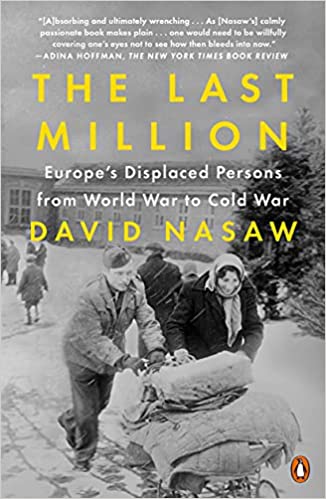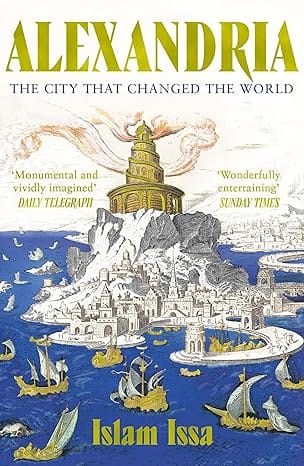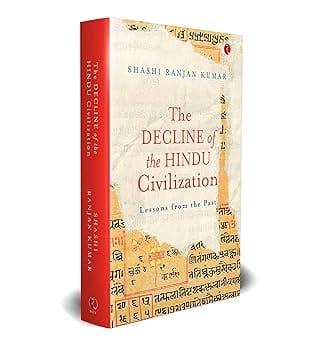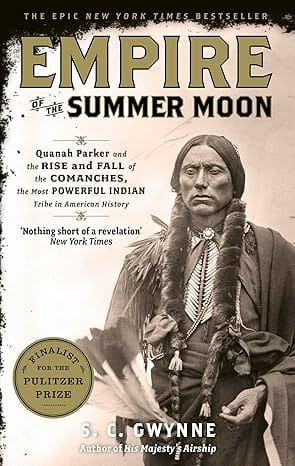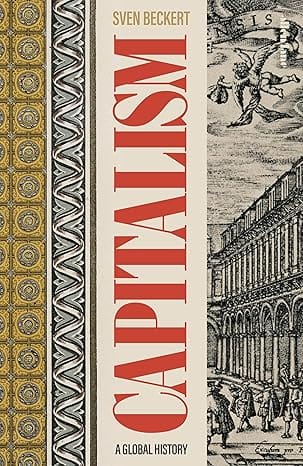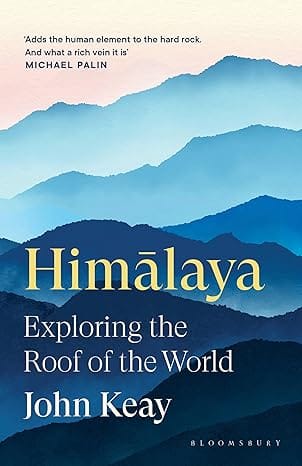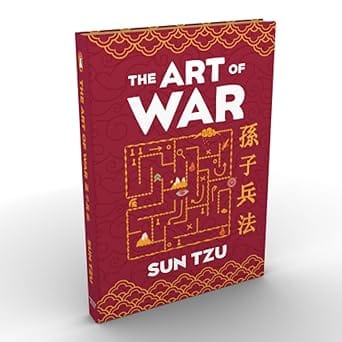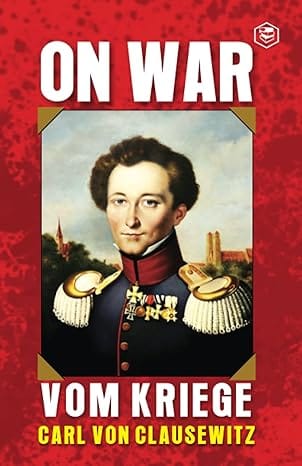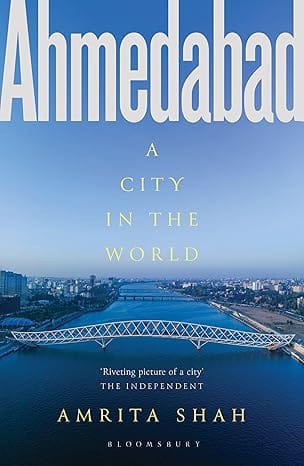-
Non-ficton
- Non-ficton
-
Contemporary Fiction
- Contemporary Fiction
-
Children
- Children
-
Comics & Graphic Novels
- Comics & Graphic Novels
-
Non-Fiction
- Non-Fiction
-
Fiction
- Fiction
In May 1945, after German forces surrendered to the Allied powers, millions of concentration camp survivors, POWs, slave laborers, political prisoners, and Nazi collaborators were left behind in Germany, a nation in ruins. British and American soldiers attempted to repatriate the refugees, but more than a million displaced persons remained in Germany: Jews, Poles, Estonians, Latvians, Lithuanians, Ukrainians, and other Eastern Europeans who refused to go home or had no homes to return to. Most would eventually be resettled in lands suffering from postwar labor shortages, but no nation, including the United States, was willing to accept more than a handful of the 200,000 to 250,000 Jewish men, women, and children who remained trapped in Germany. When in June, 1948, the United States Congress passed legislation permitting the immigration of displaced persons, visas were granted to sizable numbers of war criminals and Nazi collaborators, but denied to 90% of the Jewish displaced persons.
A masterwork from acclaimed historian David Nasaw, The Last Million tells the gripping but until now hidden story of postwar displacement and statelessness and of the Last Million, as they crossed from a broken past into an unknowable future, carrying with them their wounds, their fears, their hope, and their secrets. Here for the first time, Nasaw illuminates their incredible history and shows us how it is our history as well.
Review
“In The Last Million, Nasaw has done a real service in resurrecting this history . . . Anyone who thinks President Trump’s demonization of foreigners is an aberration should read this history.” —Washington Post
“David Nasaw devastatingly illustrates in 'The Last Million,' there was widespread reluctance among the victorious Allies to confront the true nature of the Holocaust…“The Last Million” describes in meticulously researched detail what happened to the [displaced persons] who felt—understandably enough—that they could not go back to the lands of their birth.” —Wall Street Journal
“One of the many virtues of ‘The Last Million’ is the author’s ability to make vivid sense of a bewildering moment. He clarifies without oversimplifying…Nasaw demonstrates throughout an especially supple sense of scale. Much of what makes the book so absorbing and ultimately wrenching is his capacity to maneuver with skill between the nitty-grittiest of diplomatic (and congressional, military, personal) details and the so-called Big Picture. In cinematic terms, he’s adroit at surveying a vast landscape with a soaring crane shot, then zooming in sharply for a close-up of a single face as it crumples... Nasaw takes pains to avoid facile comparisons between the history he recounts and the current global moment, with its — our — own seas of refugees. As his calmly passionate book makes plain, however, one would need to be willfully covering one’s eyes not to see how then bleeds into now.” —Adina Hoffman, The New York Times Book Review
“Insightful and eye-opening…Nasaw is a humane writer with a knowledge of his subject that is broad and deep.” —Jim Zarroli, NPR.org
“Based on an avalanche of research, sweeping, searching, and filled with intimate details, The Last Million tells the enduringly relevant and not well-known story of how political differences between the United States and the United Kingdom, Cold War calculations, ethnic and religious conflicts, and antisemitism trumped humanitarian considerations, ‘turning what should have been the primary mission upside down and victimizing those who had suffered the most.’” —Glenn C. Altschuler, The Jerusalem Post
“Tells of the last million who had been confined to refugee camps for five years....Through great research, Nasaw helps the reader understand the complexity of permanently relocating refugees to a new country.” —Seattle Times
“Nasaw, a two-time Pulitzer Prize finalist, has once again produced an extraordinarily well-researched book that is well worth reading.” —Christian Science Monitor
“Nasaw does a masterful job of bringing to light the lasting individual and global consequences of policies and attitudes surrounding the last million… A thought-provoking, highly recommended perspective on a complex and largely overlooked people and period of modern history.” —Library Journal, starred review
“[Nasaw] provides a characteristically thorough and impressively researched account of the roughly one million displaced persons who found themselves stranded in Germany after the end of the war…While delving into the weeds of political compromise and legislation, Nasaw never loses sight of the hopes and struggles of the people at the center…The Last Million showcases Nasaw’s deft handling of complexity—not only the number of global controversies that the Displaced Persons issue fed into, but the morally complex issues of collaboration.” —Shelf Awareness
“A richly detailed account of what happened to the one million Holocaust survivors, former slave laborers, and POWs who found themselves in Germany at the end of WWII . . . Nasaw skillfully and movingly relates a multilayered story with implications for contemporary refugee crises. This meticulously researched history is a must-read.” —Publishers Weekly, starred review
"[M]asterful...A searching, vigorously written history of an unsettled time too little known to American readers." —Kirkus Reviews, starred review
About the Author
Excerpt. © Reprinted by permission. All rights reserved.
INTRODUCTION
The War’s “Living Wreckage”
The violence of war did not end with the signing of cease- fires, truces, or peace treaties. War bled into postwar and mil- lions of innocents who had never taken up arms continued to suffer long after the soldiers had gone home. Germany was in free fall; chaos reigned; national, regional, and local military, police, and political authorities had abandoned their posts. There was, literally, no one directing traffic, no one policing the streets, no one delivering the mail or picking up the garbage or bringing food to the shops, no one stopping the looting, the rape, the revenge-taking as millions of homeless, ill-clothed, malnourished, disoriented foreigners: Jewish sur- vivors, Polish forced laborers, former Nazi collaborators—all displaced persons—jammed the roadways, the town squares and marketplaces, begging, threatening, desperate.
“Wandering Hordes in Reich Alarming: Allies Fear Grave Prob- lems May Arise—Ask Liberated to Stay Where Freed,” John MacCor- mac of the New York Times reported in a front-page story on April 7, 1945.1 “Germany has become history’s greatest hobo jungle since the Dark Ages,” New Yorker writer Joel Sayre cabled home on May 2.2
The American and British soldiers moving east into Germany, and the reporters who accompanied them, were transfixed by what Collier’s magazine columnist W. B. Courtney referred to as war’s “living wreckage—living, moving, pallid wreckage.”
It washed up and down the margins of the autobahn in a dragging tide. It was composed of people of all sizes, ages, races and varieties or garments. A few had bicycles. Some pushed handcarts. The majority, however, rolled baby carriages. The baby carriage is the sorriest joke in Europe today, for you never see a baby in one Instead they are filled with pots and pans and tools, and all the impediments of nomads. There were shiv- ering maids, and youths in shorts, with legs blue and raw. There were released German soldiers with their army packs and cut branches for walking sticks. You knew the displaced persons by the bulk of their clothing and the magnitude of their bundles. A man wearing two or even three suits, a woman wearing several dresses and a couple of coats and carrying more were not un- usual sights. None seemed to want food. Their want lay sadly deeper, and you could not touch it with your pity but could only surmise that it was for country and home and news of loved ones. Having once seen the wandering lost millions of Europe, you could never forget them, even as you could never fully know what thoughts were in their minds or what lumps were in their hearts. In the rain and wind, they were a steamy, abject porridge of human woe.
Barely clothed in ripped and ragged, oversized striped camp uni- forms, the Jewish survivors were distinguishable by their pallor, emaci- ated physiques, shaved heads, lice-infested bodies, and the vacant look in their eyes. “You could see them walking down the street,” Chaplain Her- bert Eskin of the U.S. Army recalled, “some of them, with torn shoes, barefooted, with their long coats, the women, and the men with the paja- mas, you know, dirty, very short hair looking to talk to someone for aid.”4
The vast majority of Jewish survivors remained in the camps, too ill to leave on their own. The soldiers who encountered them tell the same stories of initial shock, then disgust, accompanied by alternating waves of pity, anger, and stomach-churning illness, followed by a body- and soul-wearying sadness that would not dissipate, a disillusionment with all things human, an enervating, pervasive disquiet that would remain with them for the rest of their lives.
Their first task was the burial of the dead and the triage of the liv- ing. Thousands of corpses littered the ground, or were stacked in sheds or uncovered graves. Among the living were those known within the camps as the Muselmänner, the unworldly, ghostly walking dead, too ill, too weak, too hurting to be moved, who had to be bathed and fed in their barracks until they were strong enough to be removed on stretch- ers to hospital facilities. Those afflicted with or dying of typhus were quarantined and left to perish. Those who were ambulatory were moved to assembly centers to be patched together again and repatriated, as soon as possible.
On April 11, Buchenwald was liberated by the inmates, hours before the arrival of the American army, but after the Germans had evacuated some twenty-eight thousand prisoners, a third of whom had died in sealed railroad cars or on arrival at their new camps or while trying to escape. On entering the camp, American soldiers from the 6th Armored Division of the Third Army found twenty thousand inmates, four thousand of whom were Jews.
Chaplain Herschel Schacter of Brooklyn, the youngest of ten chil- dren of Polish Jewish émigrés, commandeered a jeep and drove to Bu- chenwald the day it was liberated.
As we approached the area, the first thing that struck was these huge gates. . . . I walked through...I could see the huge smoke stacks and I rushed in that direction... There were piles of human bodies stacked like cordwood, waiting to be shoveled into the crematorium...I couldn’t tarry very long there, and moved on looking for living Jews...I was peering into the faces of some people who were walking around and I had no way of knowing who was a Jew and who wasn’t, and I finally stopped one little guy who looked to me to be a Jew and I just asked him in Yiddish whether there are any Jews here and he said of course and he quickly led me to a small compound in this huge camp that was wholly reserved only for Jews. It was by far the most dilapidated and run down area...There were in the first barrack a few hundred people who were obviously too weak, too sick, too bewildered to get out of the barracks... They were just lying there looking out at me half dazed, half crazed, more dead than alive. I didn’t know what to say, what to do. All I did was call out in a loud Yiddish “Shalom Aleichem Yidden, ihr zint frei.” I was under the impression that many of the people there were not even aware of what had happened. . . . I went from barracks to barracks, and in each one repeated the “Shalom Aleichem” and explained that I am an American, that I am a rabbi, and that we have come to help them, and that the war is over, and of course I spoke in Yiddish, and they clearly under- stood and got the message and I was everywhere surrounded by people who looked at me and touched me to see if it was real, if I was alive.
Liberation for most of the Jewish survivors arrived with the Ameri- can and British soldiers who entered the gates, calling out in foreign languages they did not understand that they were free. For others, it came when their German guards stripped off their uniforms, put on civilian clothes, and fled. “The first thing I saw was the guards starting to get on their trucks or run away on foot,” Henry Aizenman recalled a half century later of his escape from the Wöbbelin concentration camp. With a group of other inmates, he ran toward the armory, grabbed the rifles left behind, and chased after the guards. Henry didn’t know how to shoot a rifle, but the others did. “And then we were free.”
For the thousands of survivors whom the Germans had moved from camp to camp in the last weeks of the war to prevent their being discov- ered and freed by the Allied armies, liberation came on the roads, in the forests, on boxcars, in train stations, wherever they happened to be when the SS or the Hitler Youth or the overage members of the Volkssturm or the local volunteers who were guarding them disappeared.
Allied soldiers set up checkpoints and roadblocks at major inter- sections and on the main thoroughfares, gathered the endless streams of the lost and homeless, boarded them onto trucks, and transported them to assembly centers where they could be sorted out: the German soldiers hiding among them dispatched to POW camps; Nazi officers and offi- cials and high-level collaborators to prisons to be held and then tried for their crimes; Allied POWs, slave laborers, political prisoners, and con- centration camp survivors to assembly centers to be fed, clothed, shaved, sheltered, deloused, separated by nationality, and treated for typhus, tuberculosis, and venereal disease to prevent the infection of civilian populations.
The Allied bombing raids had wreaked such damage in the cities that there were few large structures intact to provide shelter for the displaced. Former military barracks, dormitories for forced laborers, airplane han- gars, waiting rooms in railway stations, windowless warehouses, storage sheds, garages, apartment complexes, emptied hotels and resorts, monas- teries and churches, government offices and schools, abandoned facto- ries, and, in a few cases, entire city neighborhoods were cleared, cleansed, and converted. Roofs, walls, and plumbing were repaired, fences erected, latrines dug, military guardposts established on the perimeter, food, drugs, sanitary supplies trucked in.
The movement of multitudes of displaced persons into the assembly centers was, for the millions of forced laborers and prisoners of war from Western Europe, Italy, and the Soviet Union, the first step in their journey homeward. Trucks, air convoys, trains, all available means of transportation were requisitioned to remove them from Germany. Days after the German surrender, Albert A. Hutler, chief of the U.S. Army’s Displaced Persons Office in Mannheim, was informed that “road blocks have been thrown on all the roads in our area with the purpose of pick- ing up all people circulating.” Ten 10-ton trucks would every two hours pick up the displaced and deliver them to the assembly center for pro- cessing. Three thousand would be sent home by train every day. “We will use 2 trains one ready for loading at 8 AM, and another ready at 1:30. Each train will carry 1500 passengers.”
The largest number of displaced persons in the American and Brit- ish zones of occupation were the Soviet POWs and forced laborers, more than two million of them. The Soviets wanted them repatriated— and immediately. Their nation was devastated and they required every body and soul to be returned home to rebuild it.
The Allies had agreed at Yalta to give priority to the repatriation of Soviet POWs and civilians. Within days, never more than a week or two after their delivery to the assembly centers, they were loaded into trucks, cargo planes, and railcars for the trip east through Germany into the Soviet zone of occupation and then homeward. Because there was not enough rolling stock, only women, children, and the infirm rode the trains. Everyone else had to walk to the Soviet border where the Soviets had constructed their reception centers. “Russian displacees,” wrote W. B. Courtney, “as they surge cheering across to the Red Army, are greeted with a day-long bedlam of speeches, bands, flags, placards, slogans and a myriad of loudspeakers that blare recordings of Russian folk music. And then you watch them trudge past this jolly barricade and disappear into the enigma and the great silence of the East, and you wonder how they will fare and if the back of the zone is as hospitable as its bosom.”9
Those who were able to walk on their own did not wait for the trans- ports. Singly, but most often in groups of five, ten, twenty, or more, the Polish Jewish survivors, who numbered in the thousands, and the French, Belgian, and Dutch POWs and forced laborers, who numbered in the millions, made their way home. They stowed away on railway cars; they hitched rides on military transports, hay wagons, motorized or horse-drawn carts, and lorries; they stole or “borrowed” bicycles, mo- torcycles, cars, jeeps, rowboats. They walked, limped, stumbled for- ward, begging for food and drink or robbing it, taking shelter when night came in bombed-out shells of buildings and warehouses, in barns and haylofts, in abandoned army barracks, in public parks and market- places.
Henriette Roosenburg, a Dutch resister freed from her prison in Waldheim, Germany, scrounged for rags with which to sew a Dutch flag that she and her fellow Hollanders hoped would draw to them other countrymen with whom they could begin the journey home. Dragging a child’s wagon and a disabled pram filled with their belong- ings, Roosenburg and her newly freed friends traveled on foot and by wagon, rowboat, and ferry to Halle, where they were put on a plane to Brussels and then home.10
August St. André, a French prisoner of war, profiled by Life maga- zine on May 14, 1945, had spent the war as a forced laborer in a porce- lain factory, four hundred miles from his home in France. Liberated, he strapped his suitcase to a bicycle, rode to the nearest rail station, boarded a freight car for France, and hitchhiked the rest of the way to his home near the Belgian border.
Despite the logistical problems —the lack of rolling stock, trucks, and cargo planes, the bombed-out roads and bridges, shortages of food and fuel, and the exhaustion of the troops who, having fought and won the war, now had to transport millions of civilians home—the repatriation campaign succeeded beyond expectations. By October 1, 1945, more than 2 million Soviets, 1.5 million Frenchmen, 586,000 Italians, 274,000 Dutch citizens, almost 300,000 Belgians and Luxem- bourgians, more than 200,000 Yugoslavs, 135,000 Czechs, 94,000 Poles, and tens of thousands of other European displaced persons, or DPs, had been sent home.
There remained left behind in Germany more than a million dis- placed persons warehoused in camps, overseen by the occupying mili- taries and the United Nations Relief and Rehabilitation Authority (UNRRA), which had been organized in 1943 to oversee wartime re- covery and the repatriation of the displaced.
The Last Million is the story of these displaced Eastern Europeans who, when the shooting stopped, refused to go home or had no homes to return to. It is the story of their confinement in refugee camps for up to five years after the war ended.*
The Polish Catholics who comprised the largest group of displaced persons had come to Germany during the war, the vast majority de- ported against their will as forced laborers to replace soldiers sent to the eastern front. They had homes and families to go back to and a govern- ment that welcomed their return, but hundreds of thousands preferred to remain in refugee camps in Germany. Caught up in the postwar conflict between East and West, they had been warned—and heeded those warnings—not to return to a Poland devastated by war, threat- ened by civil war, no longer independent but under Soviet domination, its eastern provinces ripped away and annexed by the USSR.
The Estonians, Latvians, Lithuanians, and some of the western Ukrainians had, unlike the Poles, departed their homelands voluntarily in the final year of the war, in flight from the advancing Red Army. Large numbers of them had collaborated with the Nazi occupiers; some had participated in the slaughter of their Jewish neighbors; a significant number had fought in German uniforms as part of Waffen-SS units.* Even the innocent among them whose collaboration had entailed noth- ing more than working in a post office under German superiors feared that should they return they would be charged with treason or war crimes. They preferred to remain in the relative safety of the displaced persons camps in Germany until their nations were liberated from the Soviets or they could start their lives anew somewhere else.
A much smaller number of Jewish survivors of concentration, labor, and death camps had entered Germany in the last months of the war. As the Red Army moved westward, German officials, fearful lest the world discover the full extent of Nazi atrocities, had loaded them into boxcars or death-marched them into Germany to work them to death in the underground munitions factories that Hitler believed were going to produce the miracle weapons that would win the war for the Third Reich. Those still alive when the war ended had no families, no homes, no loved ones to return to. Their ultimate destination, they hoped, would be a Jewish homeland in Palestine or with family members in the United States, but for now they had no choice but to remain in the dis- placed persons camps in Germany, where they were fed, sheltered, and protected by the American and British militaries, and where they en- joyed a measure of security they had not known since the war began. They were a small minority of the Last Million, numbering under thirty thousand, until in 1946 they would be joined in the displaced persons camps in Germany by the Polish Jews who had escaped death by fleeing across the border into the Soviet Union.
The camps in which the Last Million would spend the next three to five years were conceived as temporary facilities, but converted by the displaced persons into island communities, divided by nationality, with their own police forces, administrative committees, churches, schools, theaters, newspapers, and medical services. Food, supplies, and security were provided by the military; special assistance and support by accred- ited religious and ethnic voluntary organizations; administrative over- sight by UNRRA. Black market operations connected insiders with German civilians outside and brought into the camps luxuries and ne- cessities not otherwise available.
The Last Million were able to exert some control over their daily lives in the camps, but not over their futures. Those who were willing to return home would be assisted in doing so. But those who had no intention of going home again or had no homes to return to were ma- rooned, with neither the resources nor permission nor the documents they needed to leave the camps and Germany and resettle elsewhere.
Their fate was in the hands of the Allies, who remained sharply di- vided over what to do with them. The Americans and the British were agreed that the Eastern Europeans whose lands had been occupied or annexed by the Soviets had the right to refuse or delay repatriation, if that was what they chose, and the international community had the responsibility of caring for them until they decided to go home again or a place was found for them to resettle.
The Soviets and the Eastern bloc of nations where the DPs had for- merly lived demanded that they be repatriated. Only the Jews and Spanish Republicans were, they argued, truly displaced; the others had homes to return to and nations ready to welcome them. Those who sought refuge in the camps were, they insisted, refusing repatriation because they preferred being fed by the western Allies and UNRRA to working to rebuild their shattered nations, or, worse yet, because they feared punishment as quislings, Nazi collaborators, or war criminals should they return home. Fearful that the Americans and the British, their former allies, were under the protective cover of UNRRA warehousing anti-Communist, anti-Soviet dissidents to later deploy in counterrevolutionary propaganda or military campaigns not dissimilar to the ones they had launched after the Russian Revolution, the Soviet bloc nations demanded that the camps be closed and the displaced per- sons sent home or left to fend for themselves without Allied or UNRRA assistance.
After a year of fruitless and increasingly acrimonious debate and the obstinate refusal of the Last Million to go home, the Americans and the British concluded that, repatriation having failed, they would have to resettle the displaced persons in new homes and homelands outside Germany. UNRRA would be replaced by the International Refugee Organization (IRO), whose mandate would be resettlement, not repa- triation. The Soviet bloc nations tried, without success, to block the establishment of the new organization, then refused to join or contrib- ute to its financial support.
The IRO would succeed in removing the Last Million from the camps by marketing them as the solution to labor shortages aggravated by the recent war. Britain, France, Belgium, and then Canada, Austra- lia, and the nations of South America and the Caribbean were encour- aged to send recruiting teams to the camps to select displaced persons to fill their particular labor needs. The first choices of the recruiters were the Latvians and Estonians because they were white, Protestant, healthier than the forced laborers and concentration camp survivors, reliably anti-Communist, and with a reputation for being disciplined and diligent. Next were the Lithuanians, Ukrainians, and Polish DPs. Ignored or intentionally discounted in the recruiting nations’ eagerness to gain a cheap labor force was the fact that a not insignificant propor- tion of the Baltic and some of the Ukrainian DPs had collaborated with the Nazi occupiers or fought alongside them.
The IRO member nations that accepted for resettlement hundreds of thousands of Protestant, Catholic, and Eastern Orthodox Eastern Europeans refused to do the same for the 200,000 to 250,000 Jewish displaced persons, who remained trapped in the camps in Germany, the land of their murderers, awaiting the opening by the British of the gates to Palestine or the offer of visas to the United States, Canada, or Aus- tralia. With no legal route out of the camps, thousands left clandes- tinely for ports from which they could sail to and enter Palestine.
From the moment he assumed office in April 1945, President Tru- man had believed that in order to remove the Last Million from Ger- many, he would have to pressure the British to open Palestine to Jewish immigration. Only when it became clear that the British were not going to do so did he recommend that Congress consider passing emergency legislation to admit America’s “fair share” of Europe’s refugees, includ- ing significant numbers of Jewish survivors.
The United States was among the last nations to welcome the Last Million for resettlement, save those whom the CIA and State Depart- ment deemed useful for clandestine Cold War campaigns at home and abroad. Tho
The Last Million Europes Displaced Persons From World War To Cold War
SIZE GUIDE
- ISBN: 9780143110996
- Author: David Nasaw
- Publisher: Penguin
- Pages: 672
- Format: Paperback
Book Description
In May 1945, after German forces surrendered to the Allied powers, millions of concentration camp survivors, POWs, slave laborers, political prisoners, and Nazi collaborators were left behind in Germany, a nation in ruins. British and American soldiers attempted to repatriate the refugees, but more than a million displaced persons remained in Germany: Jews, Poles, Estonians, Latvians, Lithuanians, Ukrainians, and other Eastern Europeans who refused to go home or had no homes to return to. Most would eventually be resettled in lands suffering from postwar labor shortages, but no nation, including the United States, was willing to accept more than a handful of the 200,000 to 250,000 Jewish men, women, and children who remained trapped in Germany. When in June, 1948, the United States Congress passed legislation permitting the immigration of displaced persons, visas were granted to sizable numbers of war criminals and Nazi collaborators, but denied to 90% of the Jewish displaced persons.
A masterwork from acclaimed historian David Nasaw, The Last Million tells the gripping but until now hidden story of postwar displacement and statelessness and of the Last Million, as they crossed from a broken past into an unknowable future, carrying with them their wounds, their fears, their hope, and their secrets. Here for the first time, Nasaw illuminates their incredible history and shows us how it is our history as well.
Review
“In The Last Million, Nasaw has done a real service in resurrecting this history . . . Anyone who thinks President Trump’s demonization of foreigners is an aberration should read this history.” —Washington Post
“David Nasaw devastatingly illustrates in 'The Last Million,' there was widespread reluctance among the victorious Allies to confront the true nature of the Holocaust…“The Last Million” describes in meticulously researched detail what happened to the [displaced persons] who felt—understandably enough—that they could not go back to the lands of their birth.” —Wall Street Journal
“One of the many virtues of ‘The Last Million’ is the author’s ability to make vivid sense of a bewildering moment. He clarifies without oversimplifying…Nasaw demonstrates throughout an especially supple sense of scale. Much of what makes the book so absorbing and ultimately wrenching is his capacity to maneuver with skill between the nitty-grittiest of diplomatic (and congressional, military, personal) details and the so-called Big Picture. In cinematic terms, he’s adroit at surveying a vast landscape with a soaring crane shot, then zooming in sharply for a close-up of a single face as it crumples... Nasaw takes pains to avoid facile comparisons between the history he recounts and the current global moment, with its — our — own seas of refugees. As his calmly passionate book makes plain, however, one would need to be willfully covering one’s eyes not to see how then bleeds into now.” —Adina Hoffman, The New York Times Book Review
“Insightful and eye-opening…Nasaw is a humane writer with a knowledge of his subject that is broad and deep.” —Jim Zarroli, NPR.org
“Based on an avalanche of research, sweeping, searching, and filled with intimate details, The Last Million tells the enduringly relevant and not well-known story of how political differences between the United States and the United Kingdom, Cold War calculations, ethnic and religious conflicts, and antisemitism trumped humanitarian considerations, ‘turning what should have been the primary mission upside down and victimizing those who had suffered the most.’” —Glenn C. Altschuler, The Jerusalem Post
“Tells of the last million who had been confined to refugee camps for five years....Through great research, Nasaw helps the reader understand the complexity of permanently relocating refugees to a new country.” —Seattle Times
“Nasaw, a two-time Pulitzer Prize finalist, has once again produced an extraordinarily well-researched book that is well worth reading.” —Christian Science Monitor
“Nasaw does a masterful job of bringing to light the lasting individual and global consequences of policies and attitudes surrounding the last million… A thought-provoking, highly recommended perspective on a complex and largely overlooked people and period of modern history.” —Library Journal, starred review
“[Nasaw] provides a characteristically thorough and impressively researched account of the roughly one million displaced persons who found themselves stranded in Germany after the end of the war…While delving into the weeds of political compromise and legislation, Nasaw never loses sight of the hopes and struggles of the people at the center…The Last Million showcases Nasaw’s deft handling of complexity—not only the number of global controversies that the Displaced Persons issue fed into, but the morally complex issues of collaboration.” —Shelf Awareness
“A richly detailed account of what happened to the one million Holocaust survivors, former slave laborers, and POWs who found themselves in Germany at the end of WWII . . . Nasaw skillfully and movingly relates a multilayered story with implications for contemporary refugee crises. This meticulously researched history is a must-read.” —Publishers Weekly, starred review
"[M]asterful...A searching, vigorously written history of an unsettled time too little known to American readers." —Kirkus Reviews, starred review
About the Author
Excerpt. © Reprinted by permission. All rights reserved.
INTRODUCTION
The War’s “Living Wreckage”
The violence of war did not end with the signing of cease- fires, truces, or peace treaties. War bled into postwar and mil- lions of innocents who had never taken up arms continued to suffer long after the soldiers had gone home. Germany was in free fall; chaos reigned; national, regional, and local military, police, and political authorities had abandoned their posts. There was, literally, no one directing traffic, no one policing the streets, no one delivering the mail or picking up the garbage or bringing food to the shops, no one stopping the looting, the rape, the revenge-taking as millions of homeless, ill-clothed, malnourished, disoriented foreigners: Jewish sur- vivors, Polish forced laborers, former Nazi collaborators—all displaced persons—jammed the roadways, the town squares and marketplaces, begging, threatening, desperate.
“Wandering Hordes in Reich Alarming: Allies Fear Grave Prob- lems May Arise—Ask Liberated to Stay Where Freed,” John MacCor- mac of the New York Times reported in a front-page story on April 7, 1945.1 “Germany has become history’s greatest hobo jungle since the Dark Ages,” New Yorker writer Joel Sayre cabled home on May 2.2
The American and British soldiers moving east into Germany, and the reporters who accompanied them, were transfixed by what Collier’s magazine columnist W. B. Courtney referred to as war’s “living wreckage—living, moving, pallid wreckage.”
It washed up and down the margins of the autobahn in a dragging tide. It was composed of people of all sizes, ages, races and varieties or garments. A few had bicycles. Some pushed handcarts. The majority, however, rolled baby carriages. The baby carriage is the sorriest joke in Europe today, for you never see a baby in one Instead they are filled with pots and pans and tools, and all the impediments of nomads. There were shiv- ering maids, and youths in shorts, with legs blue and raw. There were released German soldiers with their army packs and cut branches for walking sticks. You knew the displaced persons by the bulk of their clothing and the magnitude of their bundles. A man wearing two or even three suits, a woman wearing several dresses and a couple of coats and carrying more were not un- usual sights. None seemed to want food. Their want lay sadly deeper, and you could not touch it with your pity but could only surmise that it was for country and home and news of loved ones. Having once seen the wandering lost millions of Europe, you could never forget them, even as you could never fully know what thoughts were in their minds or what lumps were in their hearts. In the rain and wind, they were a steamy, abject porridge of human woe.
Barely clothed in ripped and ragged, oversized striped camp uni- forms, the Jewish survivors were distinguishable by their pallor, emaci- ated physiques, shaved heads, lice-infested bodies, and the vacant look in their eyes. “You could see them walking down the street,” Chaplain Her- bert Eskin of the U.S. Army recalled, “some of them, with torn shoes, barefooted, with their long coats, the women, and the men with the paja- mas, you know, dirty, very short hair looking to talk to someone for aid.”4
The vast majority of Jewish survivors remained in the camps, too ill to leave on their own. The soldiers who encountered them tell the same stories of initial shock, then disgust, accompanied by alternating waves of pity, anger, and stomach-churning illness, followed by a body- and soul-wearying sadness that would not dissipate, a disillusionment with all things human, an enervating, pervasive disquiet that would remain with them for the rest of their lives.
Their first task was the burial of the dead and the triage of the liv- ing. Thousands of corpses littered the ground, or were stacked in sheds or uncovered graves. Among the living were those known within the camps as the Muselmänner, the unworldly, ghostly walking dead, too ill, too weak, too hurting to be moved, who had to be bathed and fed in their barracks until they were strong enough to be removed on stretch- ers to hospital facilities. Those afflicted with or dying of typhus were quarantined and left to perish. Those who were ambulatory were moved to assembly centers to be patched together again and repatriated, as soon as possible.
On April 11, Buchenwald was liberated by the inmates, hours before the arrival of the American army, but after the Germans had evacuated some twenty-eight thousand prisoners, a third of whom had died in sealed railroad cars or on arrival at their new camps or while trying to escape. On entering the camp, American soldiers from the 6th Armored Division of the Third Army found twenty thousand inmates, four thousand of whom were Jews.
Chaplain Herschel Schacter of Brooklyn, the youngest of ten chil- dren of Polish Jewish émigrés, commandeered a jeep and drove to Bu- chenwald the day it was liberated.
As we approached the area, the first thing that struck was these huge gates. . . . I walked through...I could see the huge smoke stacks and I rushed in that direction... There were piles of human bodies stacked like cordwood, waiting to be shoveled into the crematorium...I couldn’t tarry very long there, and moved on looking for living Jews...I was peering into the faces of some people who were walking around and I had no way of knowing who was a Jew and who wasn’t, and I finally stopped one little guy who looked to me to be a Jew and I just asked him in Yiddish whether there are any Jews here and he said of course and he quickly led me to a small compound in this huge camp that was wholly reserved only for Jews. It was by far the most dilapidated and run down area...There were in the first barrack a few hundred people who were obviously too weak, too sick, too bewildered to get out of the barracks... They were just lying there looking out at me half dazed, half crazed, more dead than alive. I didn’t know what to say, what to do. All I did was call out in a loud Yiddish “Shalom Aleichem Yidden, ihr zint frei.” I was under the impression that many of the people there were not even aware of what had happened. . . . I went from barracks to barracks, and in each one repeated the “Shalom Aleichem” and explained that I am an American, that I am a rabbi, and that we have come to help them, and that the war is over, and of course I spoke in Yiddish, and they clearly under- stood and got the message and I was everywhere surrounded by people who looked at me and touched me to see if it was real, if I was alive.
Liberation for most of the Jewish survivors arrived with the Ameri- can and British soldiers who entered the gates, calling out in foreign languages they did not understand that they were free. For others, it came when their German guards stripped off their uniforms, put on civilian clothes, and fled. “The first thing I saw was the guards starting to get on their trucks or run away on foot,” Henry Aizenman recalled a half century later of his escape from the Wöbbelin concentration camp. With a group of other inmates, he ran toward the armory, grabbed the rifles left behind, and chased after the guards. Henry didn’t know how to shoot a rifle, but the others did. “And then we were free.”
For the thousands of survivors whom the Germans had moved from camp to camp in the last weeks of the war to prevent their being discov- ered and freed by the Allied armies, liberation came on the roads, in the forests, on boxcars, in train stations, wherever they happened to be when the SS or the Hitler Youth or the overage members of the Volkssturm or the local volunteers who were guarding them disappeared.
Allied soldiers set up checkpoints and roadblocks at major inter- sections and on the main thoroughfares, gathered the endless streams of the lost and homeless, boarded them onto trucks, and transported them to assembly centers where they could be sorted out: the German soldiers hiding among them dispatched to POW camps; Nazi officers and offi- cials and high-level collaborators to prisons to be held and then tried for their crimes; Allied POWs, slave laborers, political prisoners, and con- centration camp survivors to assembly centers to be fed, clothed, shaved, sheltered, deloused, separated by nationality, and treated for typhus, tuberculosis, and venereal disease to prevent the infection of civilian populations.
The Allied bombing raids had wreaked such damage in the cities that there were few large structures intact to provide shelter for the displaced. Former military barracks, dormitories for forced laborers, airplane han- gars, waiting rooms in railway stations, windowless warehouses, storage sheds, garages, apartment complexes, emptied hotels and resorts, monas- teries and churches, government offices and schools, abandoned facto- ries, and, in a few cases, entire city neighborhoods were cleared, cleansed, and converted. Roofs, walls, and plumbing were repaired, fences erected, latrines dug, military guardposts established on the perimeter, food, drugs, sanitary supplies trucked in.
The movement of multitudes of displaced persons into the assembly centers was, for the millions of forced laborers and prisoners of war from Western Europe, Italy, and the Soviet Union, the first step in their journey homeward. Trucks, air convoys, trains, all available means of transportation were requisitioned to remove them from Germany. Days after the German surrender, Albert A. Hutler, chief of the U.S. Army’s Displaced Persons Office in Mannheim, was informed that “road blocks have been thrown on all the roads in our area with the purpose of pick- ing up all people circulating.” Ten 10-ton trucks would every two hours pick up the displaced and deliver them to the assembly center for pro- cessing. Three thousand would be sent home by train every day. “We will use 2 trains one ready for loading at 8 AM, and another ready at 1:30. Each train will carry 1500 passengers.”
The largest number of displaced persons in the American and Brit- ish zones of occupation were the Soviet POWs and forced laborers, more than two million of them. The Soviets wanted them repatriated— and immediately. Their nation was devastated and they required every body and soul to be returned home to rebuild it.
The Allies had agreed at Yalta to give priority to the repatriation of Soviet POWs and civilians. Within days, never more than a week or two after their delivery to the assembly centers, they were loaded into trucks, cargo planes, and railcars for the trip east through Germany into the Soviet zone of occupation and then homeward. Because there was not enough rolling stock, only women, children, and the infirm rode the trains. Everyone else had to walk to the Soviet border where the Soviets had constructed their reception centers. “Russian displacees,” wrote W. B. Courtney, “as they surge cheering across to the Red Army, are greeted with a day-long bedlam of speeches, bands, flags, placards, slogans and a myriad of loudspeakers that blare recordings of Russian folk music. And then you watch them trudge past this jolly barricade and disappear into the enigma and the great silence of the East, and you wonder how they will fare and if the back of the zone is as hospitable as its bosom.”9
Those who were able to walk on their own did not wait for the trans- ports. Singly, but most often in groups of five, ten, twenty, or more, the Polish Jewish survivors, who numbered in the thousands, and the French, Belgian, and Dutch POWs and forced laborers, who numbered in the millions, made their way home. They stowed away on railway cars; they hitched rides on military transports, hay wagons, motorized or horse-drawn carts, and lorries; they stole or “borrowed” bicycles, mo- torcycles, cars, jeeps, rowboats. They walked, limped, stumbled for- ward, begging for food and drink or robbing it, taking shelter when night came in bombed-out shells of buildings and warehouses, in barns and haylofts, in abandoned army barracks, in public parks and market- places.
Henriette Roosenburg, a Dutch resister freed from her prison in Waldheim, Germany, scrounged for rags with which to sew a Dutch flag that she and her fellow Hollanders hoped would draw to them other countrymen with whom they could begin the journey home. Dragging a child’s wagon and a disabled pram filled with their belong- ings, Roosenburg and her newly freed friends traveled on foot and by wagon, rowboat, and ferry to Halle, where they were put on a plane to Brussels and then home.10
August St. André, a French prisoner of war, profiled by Life maga- zine on May 14, 1945, had spent the war as a forced laborer in a porce- lain factory, four hundred miles from his home in France. Liberated, he strapped his suitcase to a bicycle, rode to the nearest rail station, boarded a freight car for France, and hitchhiked the rest of the way to his home near the Belgian border.
Despite the logistical problems —the lack of rolling stock, trucks, and cargo planes, the bombed-out roads and bridges, shortages of food and fuel, and the exhaustion of the troops who, having fought and won the war, now had to transport millions of civilians home—the repatriation campaign succeeded beyond expectations. By October 1, 1945, more than 2 million Soviets, 1.5 million Frenchmen, 586,000 Italians, 274,000 Dutch citizens, almost 300,000 Belgians and Luxem- bourgians, more than 200,000 Yugoslavs, 135,000 Czechs, 94,000 Poles, and tens of thousands of other European displaced persons, or DPs, had been sent home.
There remained left behind in Germany more than a million dis- placed persons warehoused in camps, overseen by the occupying mili- taries and the United Nations Relief and Rehabilitation Authority (UNRRA), which had been organized in 1943 to oversee wartime re- covery and the repatriation of the displaced.
The Last Million is the story of these displaced Eastern Europeans who, when the shooting stopped, refused to go home or had no homes to return to. It is the story of their confinement in refugee camps for up to five years after the war ended.*
The Polish Catholics who comprised the largest group of displaced persons had come to Germany during the war, the vast majority de- ported against their will as forced laborers to replace soldiers sent to the eastern front. They had homes and families to go back to and a govern- ment that welcomed their return, but hundreds of thousands preferred to remain in refugee camps in Germany. Caught up in the postwar conflict between East and West, they had been warned—and heeded those warnings—not to return to a Poland devastated by war, threat- ened by civil war, no longer independent but under Soviet domination, its eastern provinces ripped away and annexed by the USSR.
The Estonians, Latvians, Lithuanians, and some of the western Ukrainians had, unlike the Poles, departed their homelands voluntarily in the final year of the war, in flight from the advancing Red Army. Large numbers of them had collaborated with the Nazi occupiers; some had participated in the slaughter of their Jewish neighbors; a significant number had fought in German uniforms as part of Waffen-SS units.* Even the innocent among them whose collaboration had entailed noth- ing more than working in a post office under German superiors feared that should they return they would be charged with treason or war crimes. They preferred to remain in the relative safety of the displaced persons camps in Germany until their nations were liberated from the Soviets or they could start their lives anew somewhere else.
A much smaller number of Jewish survivors of concentration, labor, and death camps had entered Germany in the last months of the war. As the Red Army moved westward, German officials, fearful lest the world discover the full extent of Nazi atrocities, had loaded them into boxcars or death-marched them into Germany to work them to death in the underground munitions factories that Hitler believed were going to produce the miracle weapons that would win the war for the Third Reich. Those still alive when the war ended had no families, no homes, no loved ones to return to. Their ultimate destination, they hoped, would be a Jewish homeland in Palestine or with family members in the United States, but for now they had no choice but to remain in the dis- placed persons camps in Germany, where they were fed, sheltered, and protected by the American and British militaries, and where they en- joyed a measure of security they had not known since the war began. They were a small minority of the Last Million, numbering under thirty thousand, until in 1946 they would be joined in the displaced persons camps in Germany by the Polish Jews who had escaped death by fleeing across the border into the Soviet Union.
The camps in which the Last Million would spend the next three to five years were conceived as temporary facilities, but converted by the displaced persons into island communities, divided by nationality, with their own police forces, administrative committees, churches, schools, theaters, newspapers, and medical services. Food, supplies, and security were provided by the military; special assistance and support by accred- ited religious and ethnic voluntary organizations; administrative over- sight by UNRRA. Black market operations connected insiders with German civilians outside and brought into the camps luxuries and ne- cessities not otherwise available.
The Last Million were able to exert some control over their daily lives in the camps, but not over their futures. Those who were willing to return home would be assisted in doing so. But those who had no intention of going home again or had no homes to return to were ma- rooned, with neither the resources nor permission nor the documents they needed to leave the camps and Germany and resettle elsewhere.
Their fate was in the hands of the Allies, who remained sharply di- vided over what to do with them. The Americans and the British were agreed that the Eastern Europeans whose lands had been occupied or annexed by the Soviets had the right to refuse or delay repatriation, if that was what they chose, and the international community had the responsibility of caring for them until they decided to go home again or a place was found for them to resettle.
The Soviets and the Eastern bloc of nations where the DPs had for- merly lived demanded that they be repatriated. Only the Jews and Spanish Republicans were, they argued, truly displaced; the others had homes to return to and nations ready to welcome them. Those who sought refuge in the camps were, they insisted, refusing repatriation because they preferred being fed by the western Allies and UNRRA to working to rebuild their shattered nations, or, worse yet, because they feared punishment as quislings, Nazi collaborators, or war criminals should they return home. Fearful that the Americans and the British, their former allies, were under the protective cover of UNRRA warehousing anti-Communist, anti-Soviet dissidents to later deploy in counterrevolutionary propaganda or military campaigns not dissimilar to the ones they had launched after the Russian Revolution, the Soviet bloc nations demanded that the camps be closed and the displaced per- sons sent home or left to fend for themselves without Allied or UNRRA assistance.
After a year of fruitless and increasingly acrimonious debate and the obstinate refusal of the Last Million to go home, the Americans and the British concluded that, repatriation having failed, they would have to resettle the displaced persons in new homes and homelands outside Germany. UNRRA would be replaced by the International Refugee Organization (IRO), whose mandate would be resettlement, not repa- triation. The Soviet bloc nations tried, without success, to block the establishment of the new organization, then refused to join or contrib- ute to its financial support.
The IRO would succeed in removing the Last Million from the camps by marketing them as the solution to labor shortages aggravated by the recent war. Britain, France, Belgium, and then Canada, Austra- lia, and the nations of South America and the Caribbean were encour- aged to send recruiting teams to the camps to select displaced persons to fill their particular labor needs. The first choices of the recruiters were the Latvians and Estonians because they were white, Protestant, healthier than the forced laborers and concentration camp survivors, reliably anti-Communist, and with a reputation for being disciplined and diligent. Next were the Lithuanians, Ukrainians, and Polish DPs. Ignored or intentionally discounted in the recruiting nations’ eagerness to gain a cheap labor force was the fact that a not insignificant propor- tion of the Baltic and some of the Ukrainian DPs had collaborated with the Nazi occupiers or fought alongside them.
The IRO member nations that accepted for resettlement hundreds of thousands of Protestant, Catholic, and Eastern Orthodox Eastern Europeans refused to do the same for the 200,000 to 250,000 Jewish displaced persons, who remained trapped in the camps in Germany, the land of their murderers, awaiting the opening by the British of the gates to Palestine or the offer of visas to the United States, Canada, or Aus- tralia. With no legal route out of the camps, thousands left clandes- tinely for ports from which they could sail to and enter Palestine.
From the moment he assumed office in April 1945, President Tru- man had believed that in order to remove the Last Million from Ger- many, he would have to pressure the British to open Palestine to Jewish immigration. Only when it became clear that the British were not going to do so did he recommend that Congress consider passing emergency legislation to admit America’s “fair share” of Europe’s refugees, includ- ing significant numbers of Jewish survivors.
The United States was among the last nations to welcome the Last Million for resettlement, save those whom the CIA and State Depart- ment deemed useful for clandestine Cold War campaigns at home and abroad. Tho
Related Books
User reviews
NEWSLETTER
Subscribe to get Email Updates!
Thanks for subscribing.
Your response has been recorded.

India's Iconic & Independent Book Store offering a vast selection of books across a variety of genres Since 1978.
"We Believe In The Power of Books" Our mission is to make books accessible to everyone, and to cultivate a culture of reading and learning. We strive to provide a wide range of books, from classic literature, sci-fi and fantasy, to graphic novels, biographies and self-help books, so that everyone can find something to read.
Whether you’re looking for your next great read, a gift for someone special, or just browsing, Midland is here to make your book-buying experience easy and enjoyable.
We are shipping pan India and across the world.
For Bulk Order / Corporate Gifting
 +91 9818282497 |
+91 9818282497 |  [email protected]
[email protected]
Click To Know More
INFORMATION
POLICIES
ACCOUNT
QUICK LINKS
ADDRESS
Shop No.20, Aurobindo Palace Market, Near Church, New Delhi

